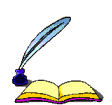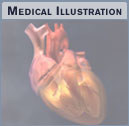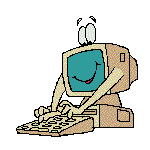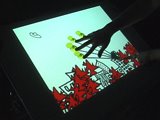Audio Visual Database
The field of Audio-Visual obviously overelaps Film, Animation, and Computers, so there will be duplication of sites in the various Databases below. Hopefully at some point they will be better categorised, but until they are, they just act as pointers for those interested.
AV Books
Audiovisual books
AV Publishers
AV Publications
AV Journals
AV journals
AV magazines
AV ezines
AV Guides
AV Reports
AV Library Catalogues
AV References
AV Headings
AV Notices
AV Editing Tools
AV editing tools
Input and Output devices
Input devices
AV tablets
Light pens
Special keyboards
Optical mouse
AV cameras
Web cameras
Output devices
AV capturing
AV Exhibitions
AV Museums
AV exhibitions
AV Shows
AV Projects
AV Projects
AV workshops
Community Services links
Community TV UK
Environment links
Healthy Eating links
Home Safety links
Police information links
Sport for children links
AV People
AV masters
AV Artists
AV Designers
AV music composers
AV Writers
AV Producers
AV Directors
AV Studies
AV Certificates
AV courses
AV degrees
AV exams
AV qualifications
AV Theory
Free AV lessons
AV scholarships
AV Colleges
AV Colleges UK
AV Colleges USA
Online AV Courses
AV Documentaries
AV tutorials
AV in the Curriculum
AV in Education
AV in the Curriculum
AV definitions
Animatic definition
AV for Children
AV for kids
AV Glossary
Teaching AV
AV Tutorials
Optical Toys
AV for Special Needs
AV Arts Education
AV School Directory
AV Headings
AV tutorials
AV Techniques
2d AV
3D AV
AV Dolls
AV Figures
AV AV
AV Illusion
AV Inbetweens
AV Layouts
AV Photo
AV Photocopy
AV Plugins
AV Practice
AV Projectors
AV Titling
AV toolsets
AV Tricks
Art Illusion
Cel AV
Computer AV
Cutout AV
Drawn AV
Experimental AV
Facial AV
Limited AV
Line testing AV
Model AV
Movie Making AV
Optical effects
Optical printers
Paper AV
Pencil test AV
Performance AV
Pixilation
Plasticine AV
Puppet AV
Raster AV
Rotoscoping
Sand AV
Time Lapse AV
Traditional AV
Vector AV
AV Art
AV Sources
AV Sources
AV library
AV libraries
AV Skins
Free AV gifs
Free-clipart
Animals
Faces
Machines
Weather
Buttons
People
Transport
Gif AVs
AV cycles
Flash AV
AV Alphabets
Flash AV tutorials
Flash AV
Animes
Anims
AV Collections
AV Listings
AV Data Bases
AWN
AV Databases
AV data banks
AV Research
AV Data base links
Audio Visual Data Base
Audio Visual Links
Multi AV database
Multi AV Links
AV Taxonomy
AV Indexes
AV Bibliographies
AV Biographies
AV Statistics
AV Registers
AV Funding
AV Funding
AV Grants
AV Funding
AV Grants
AV Materials
AV materials
AV Supplies
AV Equipment
AV capture cards
AV Equipment
AV Light boxes
AV line testers
AV rostrums
AV suppliers
Editing systems
Home Recording
Rostrum cameras
Sound for AV
Actors in AV
AV Recording
AV Sound mixing
Music for AV
Sound sfx
Sound Special Effects
Sounds for AV
Vocoders
Voice-Over Actors
Animal sounds
Animal sounds downloads
Animal sounds for kids
Animal sounds midi
Animal sounds mp3
Animal sounds online
Animal sounds.wav
Animals
Machine sounds
Machines noises
machine sounds
machine sound effects
animal sounds ringtones
Weather sounds
Weather sounds
weather sound effects
weather sound fx
weather sound files
weather sounds wav
Writing for AV
AV Slideshows
Animatics
AV Glossary
AV Scriptwriting
Comic Strip writing
AV scriptwriting
Flow Charting
Graphic Novels
Photo Strip writing
Pre-visualisation
Pre-visualization
Societies for Writers
Storyboard software
Storyboard templates
Storyboards
AV Scriptwriting
AV Scriptwriting
Visualisation
Visualization
Writing Dialogue
Writing Fantasy
Writing for AV
Writing Graphic Novels
Previs
Writing AV Games
Writing for Children
Writing Advertising
Women’s AV
Women’s AV USA
Children’s AV
AV children’s Games
Children’s AV
Children’s Art
Children’s Programs
Children’s TV
Comic AVs
Games
Kids AV
Students AV
AV Forums
AV Clubs
AV Discussions
AV forums
AV Newsgroups
AV Blogs
AV Podcasting
AV – Pitching Ideas
AV – Pitching ideas
AV Directors
AV Distributors
AV presentations
Web AV
Web AV
Online AV
Web AVs
AV Character Agents
AV AV clips
AV Streaming AV
AV books - Internet
Web AV Software
AV Banners
AV Signs
AV Festivals
AV Festivals
UK
USA
World
AV Societies
AV Competitions
AV competitions
AV Awards
AV Contracts
Selling AV
AV Contracts
AV Agents
Scriptwriting Agents
Character Licensing
AV Acquisitions
AV Unions
Miscelaneous AV
AV Cards
AV Ecards
Favicons
Emoticons
AV Selections
AV Collectibles
AV Acting
AV Oddities
AV Screen Savers
Screen Capture Programs
AV for Sale
AV Auctions
AV Swimming
AV Reviews
Stop Frame
AV templates
AV Science Fiction
AV Fantasy
Flash AV tutorials
Free and cheap AV software
AV Freeware
AV Shareware
AV Demos
Free Web AV
AV Production
AV Features
AV Industry
AV Producers
AV production
AV Production Budgetting
AV Production Companies UK
AV Production Companies USA
AV Production Pipeline
AV Production Processes
AV Series
AV Studios
Independent Productions
Pre-Production
Post Production
AV in Advertising
AV Commercials
AV in Advertising
AV in Religion
Arts Television
Promotional AV
Computer Games
AV Games Designers
Computer Games Books
Computer Games Clubs
Computer Games Inventors
Computer Games makers
Computer Games Societies
AV Networks
Eefoof
AV Networks
Google AV
Internet AV
Movie Networks
Short AV Networks
Underground AV
YouTube
AV Comics
AV comics
Manga
web comics
web comic list
web comic directory
AV History
AV History
AV History USA
AV History UK
AV History France
Optical Toys
AV Archives
Computer AV
AV h-anim
AV Holograms
AV Rendering
AV spline
Computer AV
Computer AV Blogs
Computer AV Clubs
Computer AV Companies
Computer AV Glossary
Computer AV History
Computer AV Laboratories
Computer AV Languages
Computer AV programming
Computer AV programs
Computer AV Research
Computer AV Societies
Computer AV Studies
Computer AV Studios
Computer AV Techniques
Computer AV Tools
Computer Animators
Computer AV
Motion AV
Virtual Reality
Special Effects AV
SFX AV
Special effects AV
Morphing software
Audio-Visual technology
Digital Audio-Visual
AV Work
AV Ability
AV Careers
AV Instructor
AV Jobs
AV Positions
AV Talent
AV Work
AV Vacancies
Mandy
AV co-op
AV Careers
Shooting People
Talent Circle
Also check Cartoons*, Audio-Visual*, and Multi AV*
AV Science
AV Architecture
AV Astronomy
AV Astronomy
AV Biology
AV Calculations
AV Charts
AV Chemistry
AV Climate
AV Cryptology
AV Demonstrations
AV Earth
AV Electrical
AV Graphs
AV Math
AV Meteorology
AV Ornithology
AV Passwords
AV Physics
AV Planet
AV Predictions
AV Sport
AV Stars
AV Tables
AV Temperature
AV Topology
AV Universe
Architecture AV
Biology AV
Engineering AV
Legal AV
Medical AV
NASA
Science AV
Technical AV
AV Abroad
AV Argentina
AV Asia
AV Belgium
AV Canada
AV China
AV Denmark
AV Egypt
AV Finland
AV France
AV Germany
AV India
AV Iran
AV Israel
AV Italy
AV Japan
AV Middle East
AV North Korea
AV Norway
AV Pakistan
AV Russia
AV Scotland
AV South America
AV South Korea
AV Sweden
AV Thailand
AV Wales
AV West Indies
Labels: Animation, Audiovisual, AV, Film, Movies






















